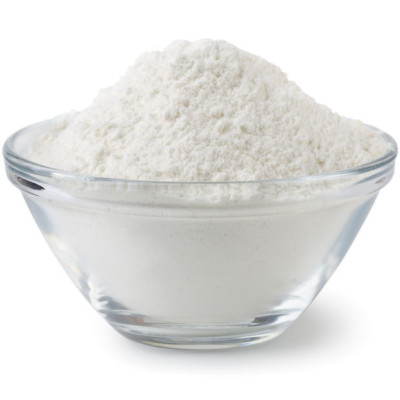
Flour Bleaching
What is flour bleaching?
Flour bleaching is a chemical treatment that removes yellow xanthophyll and other pigments from milled grains to produce whiter, finer-grain flour suitable for high ratio cakes, cookies and quick breads.1
Commercially-used flour bleaching agents include:
- Chlorine gas
- Chlorine dioxide
- Nitrogen dioxide
- Calcium and benzoyl peroxides
- Azodicarbonamide
Origin
Historically, flour whitening was done ‘naturally’ by allowing the freshly-milled wheat to sit for 1-2 months and get exposed to oxygen. That process became impractical due to required investment in time, space and contamination prevention.2
Flour bleaching with additives was introduced following a 1906 Congressional Landmark Pure Food and Drug Act which addressed the safety of chemical additives. Nitrous oxide was one of the fist additives adopted by American mills as a flour whitener. Other flour bleaching agents were soon added to the approved food additives list including chlorine gas in 1912 and benzoyl peroxide powder few years later in 1921.
Process
Flour bleaching agents are added directly to the freshly-milled flour. Powder bleaching agents such as benzoyl peroxide are mixed directly with the flour. Whitening is often completed in two days.1
Gaseous bleaching agents such as nitrogen peroxide and chlorine are fed into a bin containing the freshly-milled flour.
Bleached flour is more economical than the unbleached version due to its ease of production.
Application
Generally speaking, advantages of flour bleaching agents include:2
- Flour whitening (all bleaching agents)
- Improved viscosity of cake batter and production of larger, softer and more cohesive pancakes (mainly chlorine-based bleaching agents)
- Possibility of formulating doughs/batters with less flour (chlorine gas)
- Flour surface drying (benzoyl peroxide)
- Finer texture and grain in finished baked bread
- Increases dough machinability
- Improved baking quality
- Improved shelf life of flour
Due to its non-selectivity, flour bleaching affects many components of the flour system. In addition to whitening, gaseous chlorine can partially break down amylose and amylopectin fragments of the flour, improve protein solubility, degrade pentosans and modify the flour lipid profile.
Chlorine based bleaching agents are mostly added to cake flour and, in smaller doses, to all-purpose flours. Benzoyl peroxide is a slower acting bleaching agent compared to chlorine derivatives. Calcium peroxide’s effect is not as well-pronounced as other flour bleaching agents. Its ability to increase pH is beneficial to flours with high amylase activity. Its disadvantages include a negative effect on volume yield of baked goods as well as susceptibility to excessive browning development.
FDA regulation
Regulations for flour bleaching are clearly defined by the FDA under CFR 21 137.105 cereal flours and related products. When optional bleaching ingredients are used the word “bleached” must be on the product label.4
Permitted levels of flour bleaching agents are specified by the FDA.
Bleaching agents are banned in the EU, Canada, UK and China.
References
- Delcour, J A., and R. Carl. Hoseney. Principles of Cereal Science and Technology. AACC International, 2010. Page 140-141
- Pyler, E. J., and L. A. Gorton. Baking Science & Technology. 3rd ed., vol. 1, Sosland Pub., 2008. Pp. 350-356
- Wheat: From Field to Flour. Nebraska Wheat Board, 2009, pp. 24-26
- “CFR – Code of Federal Regulations Title 21.” Accessdata.fda.gov, www.accessdata.fda.gov/scripts/cdrh/cfdocs/cfcfr/CFRSearch.cfm?fr=137.105.

